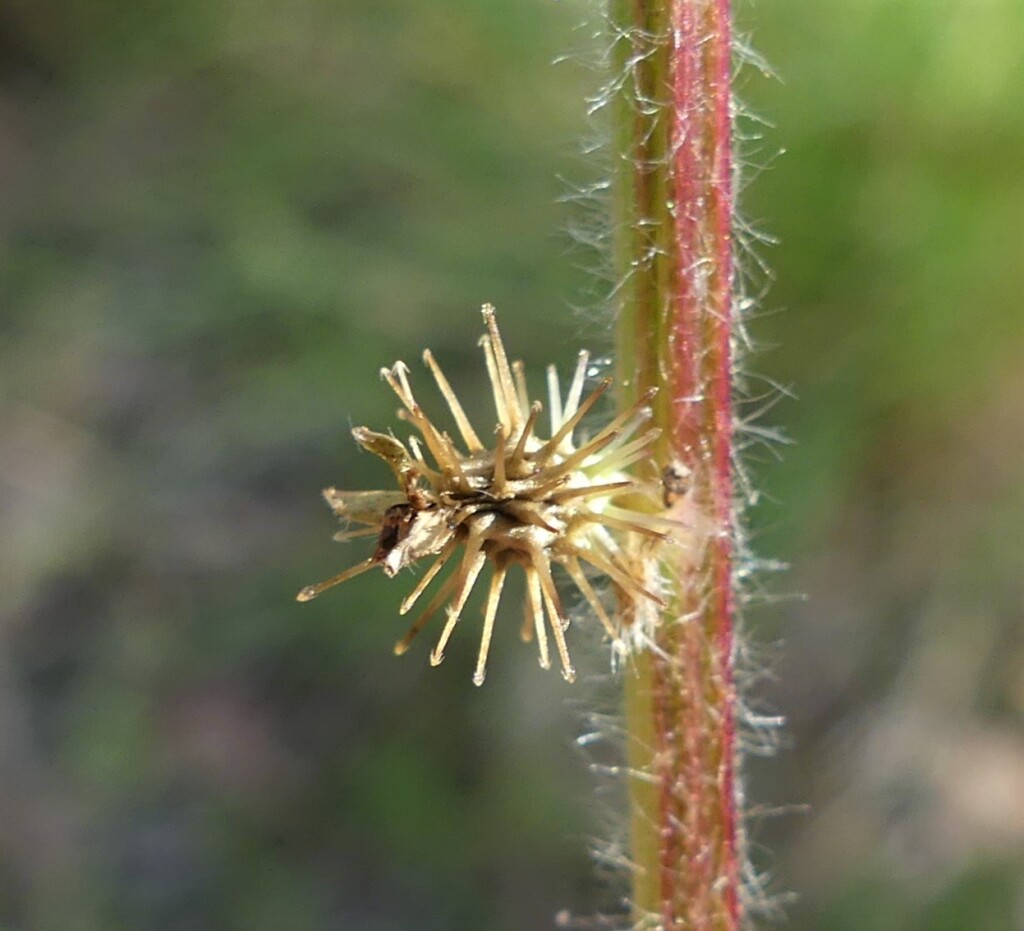Acaena agnipila
Gand. Hairy Sheep's BurrErect or ascending perennial herb 20–50(–66) cm high; branches densely pilose with spreading hairs. Leaves 9–27-foliolate, narrowly obovate to oblanceolate, mostly 8–15 cm long; leaflets ovate to oblong, the largest 5–26 mm long, 3–13 mm wide, margins deeply lobed or serrate, flat or recurved, upper surface moderately appressed-pilose, lower surface densely and evenly appressed-pilose; stipules variable, never lobed, 1–8 mm long. Inflorescence an interrupted cylindric spike, occasionally branched; peduncles pilose; sepals 5; stamens (3–)4–5(–7), dark purple; style 1, rarely 2. Fruiting hypanthia ovoid, glabrous or pubescent; spines (15–)30–40(–55), more or less equal, 1–2(–3) mm long, slender, glabrous. Flowers and fruits Aug.–Apr.
LoM, Wim, GleP, VVP, VRiv, GipP, OtP, WaP, Gold, CVU, GGr, DunT, NIS, EGL, EGU, WPro, HSF, HNF, OtR, Strz, MonT, HFE, VAlp. Also WA (?introduced), SA, Qld, NSW, Tas. Naturalized in New Zealand. Except for the north-west, widespread across much of the State.
Orchard (1969) recognized 4 varieties-var. agnipila (pilose fruit, long stamens, large stipules), var. aequispina (glabrous fruit, short stamens, small stipules), var. protenta (glabrous fruit, long stamens, large stipules) and var. tenuispica (pilose fruit, short stamens, small stipules). All 4 of these have been recorded for Victoria and intermediates often occur. In the absence of mature fruits, the 4 varieties are difficult to determine with any degree of confidence.
Apparently Acaena agnipila hybridises with A. echinata to form Acaena ×ovina (Orchard 2018).
Jeanes, J.A.; Jobson, P.C. (1996). Rosaceae. In: Walsh, N.G.; Entwisle, T.J., Flora of Victoria Vol. 3, Dicotyledons Winteraceae to Myrtaceae, pp. 556–585. Inkata Press, Melbourne.
 Spinning
SpinningOrchard, A.E. (1969). Revision of the Acaena ovina A.Cunn. (Rosaceae) complex in Australia.. Transactions of the Royal Society of South Australia 93: 91–109.
Orchard, A.E. (2018). How many spicate species of Acaena are there in Australia?. Australian Systematic Botany Society Newsletter 174: 12–14.


